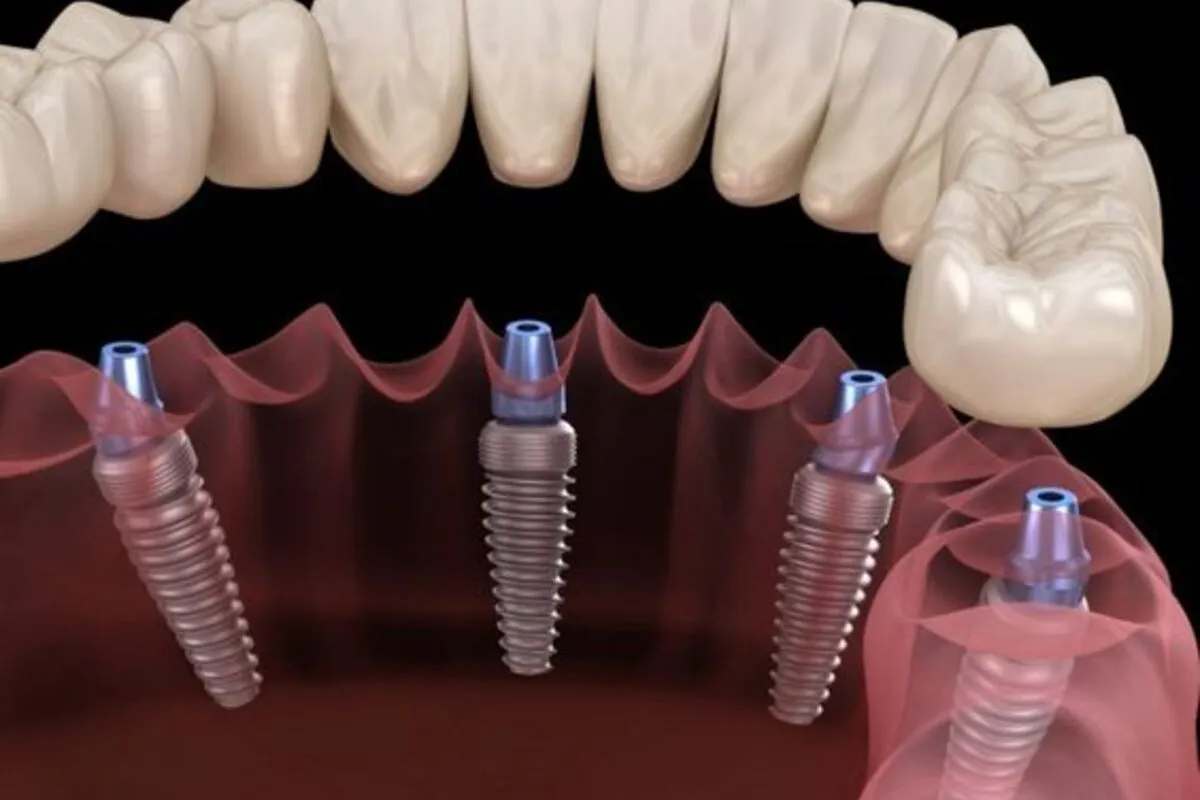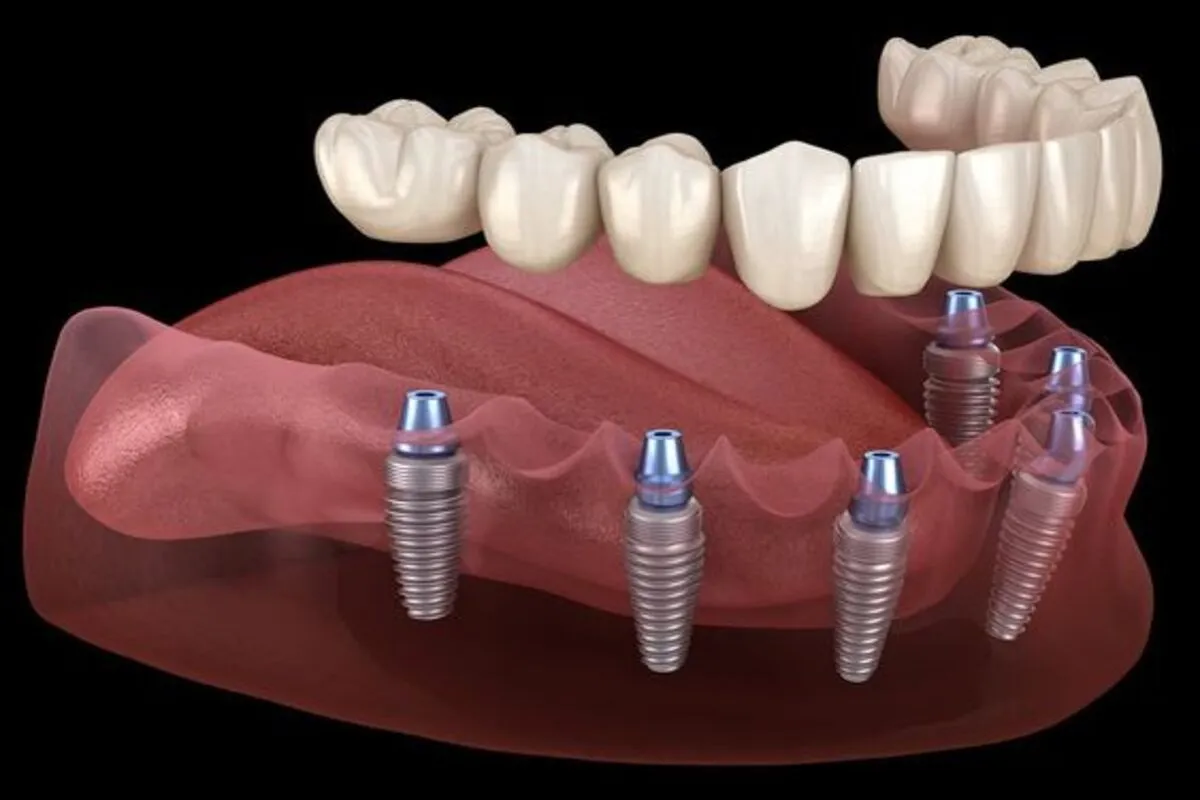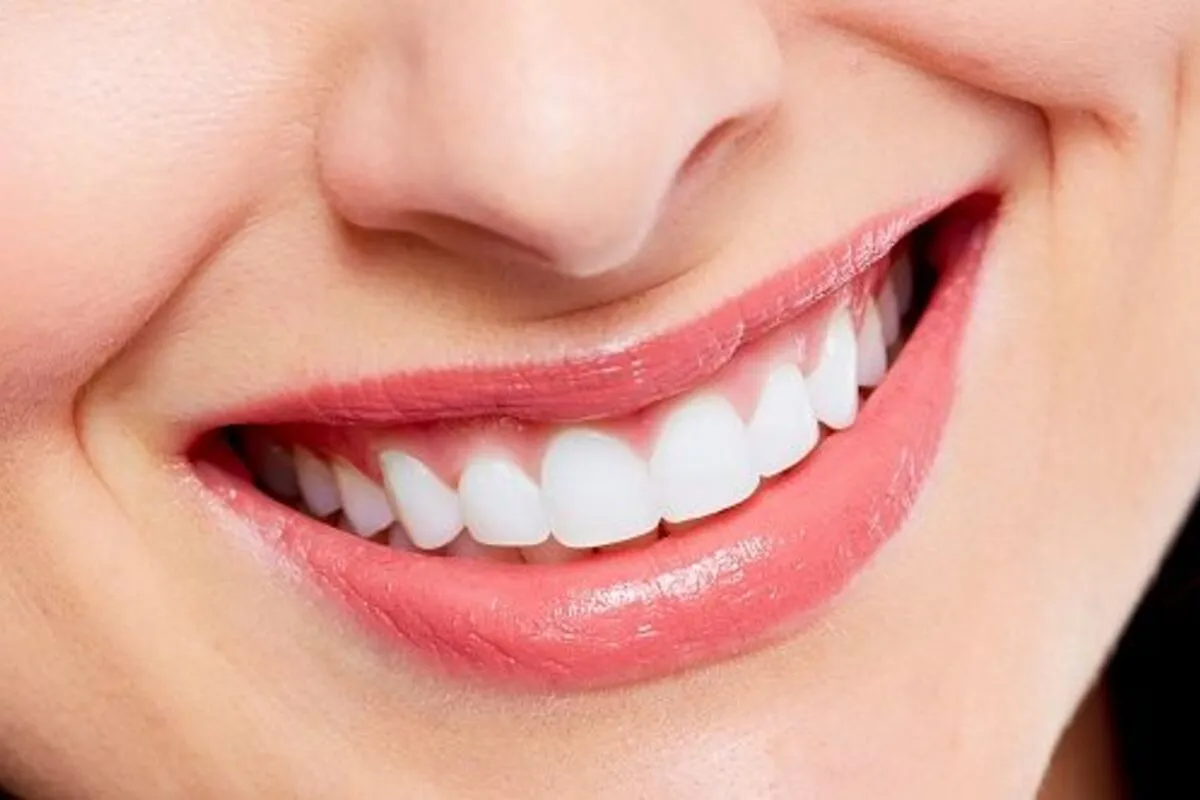Biomimetic dentistry represents a paradigm shift in the approach to dental care, emphasizing treatments that mimic the natural properties of teeth to restore function and aesthetics while supporting the body’s innate healing processes.
This discipline draws inspiration from the intricate design and resilient nature of dental tissues, aiming to develop restorative methods and materials that replicate the biological and mechanical characteristics of the tooth structure.
Introduction to Biomimetic Dentistry
The term “biomimetic” combines “bio,” meaning life, and “mimesis,” meaning to imitate, encapsulating the essence of this approach: to imitate the life-like properties of dental tissues. The foundation of biomimetic dentistry lies in understanding the complex interactions within the dental environment and applying this knowledge to create restorations that seamlessly integrate with the natural dentition.
Read it: Dental Implant Materials
This involves not only the use of materials that closely resemble the physical and chemical composition of teeth but also techniques that preserve as much of the natural tooth structure as possible.
The evolution of biomimetic dentistry has been fueled by advances in materials science and a deeper understanding of dental biology. Modern dental materials, such as composite resins and ceramics, have been developed to closely mimic the appearance, strength, and flexibility of natural teeth.
These materials are used in conjunction with adhesive techniques that ensure a secure bond between the restoration and the tooth, minimizing the need for extensive tooth preparation and preserving the integrity of the natural tooth structure.
In the context of dental implants, the biomimetic approach extends to the design and surface treatment of implants to enhance osseointegration — the direct structural and functional connection between the living bone and the surface of a load-bearing artificial implant.
Read it: The Rise of Minimally Invasive Dentistry: A Closer Look at Its Growing Importance
Achieving successful osseointegration is crucial for the long-term stability and functionality of dental implants. Biomimetic strategies in implantology include modifying the surface texture and chemistry of implants to promote cell attachment and bone growth, as well as incorporating biological molecules that stimulate the regenerative processes of the surrounding tissues.
Despite the significant advances in biomimetic dentistry, challenges remain in fully replicating the complex biological processes of tooth formation and healing. Research in this field continues to explore new materials and technologies, such as the use of stem cells and growth factors, to further enhance the biomimetic potential of dental treatments.
The goal is to not only restore the form and function of damaged or lost teeth but also to activate the body’s natural regenerative capabilities, paving the way for more effective and sustainable dental care solutions.
Biomimetic dentistry stands at the forefront of dental innovation, offering a more holistic and sustainable approach to dental care that aligns with the natural properties and healing abilities of dental tissues.
Read it: Introduction to Clear Aligner: What It Is and How It Works
As research and technology continue to advance, biomimetic principles are set to redefine the standards of dental treatment, promising better outcomes for patients and closer emulation of nature’s unrivaled design.
Fundamentals of Biomimetic Dental Implants
The concept of biomimetic dental implants revolves around the design and application of implant technologies that closely replicate the natural form and function of tooth roots, facilitating their integration into the jawbone with minimal disruption to the surrounding biological environment.
This approach to dental implantology seeks not only to replace missing teeth but to do so in a way that promotes natural healing processes, optimizes biomechanical compatibility, and mimics the esthetic and functional aspects of natural dentition.
Material Selection and Design:
The selection of materials for biomimetic dental implants is critical, with titanium being the most widely used due to its excellent biocompatibility, mechanical properties, and ability to support osseointegration. However, the biomimetic approach extends beyond the choice of material to the design of the implant itself.

The aim is to create implants with surface properties and architectures that closely mimic the microenvironment of natural tooth roots, enhancing the biological response and facilitating the integration of the implant with the surrounding bone tissue.
Surface modifications of titanium implants, such as creating micro and nano-scale topographies, have been shown to significantly affect the behavior of cells at the implant interface, promoting better adhesion, proliferation, and differentiation of osteoblasts.
These modifications can be achieved through various techniques, including acid etching, sandblasting, and the application of bioactive coatings. For instance, coatings of calcium phosphate compounds, such as hydroxyapatite, a component naturally found in bone, can enhance osseointegration by providing a more bioactive surface.
Incorporating Biological Molecules:
A pivotal aspect of biomimetic implants is the incorporation of biological molecules that can stimulate specific cellular responses at the implant site.
This can include the use of peptides, growth factors, and other bioactive molecules that are involved in bone healing and regeneration. By introducing these molecules onto the surface of implants, it’s possible to accelerate bone formation around the implant, enhance the strength of the bone-implant interface, and reduce healing times.
Research into the use of such biomolecules has included the investigation of extracellular matrix components and designed peptides that mimic the natural signaling pathways involved in bone repair and regeneration.
These molecules can be tethered to the implant surface or incorporated into bioactive coatings that gradually release the active agents into the surrounding tissue, providing sustained stimulation of bone formation around the implant.
Technological Innovations:
The field of biomimetic dental implants is also exploring the potential of advanced manufacturing techniques, such as 3D printing and nanotechnology, to create implants that are more closely tailored to the individual patient’s anatomy and needs.
These technologies allow for the fabrication of implants with complex geometries that can more accurately mimic the natural tooth root structure, potentially offering better mechanical stability and load distribution.
Moreover, the use of nanotechnology has opened new avenues for the development of implant surfaces with enhanced bioactivity and antibacterial properties.
For example, nanoparticles of metals such as silver or zinc can be incorporated into implant coatings to reduce the risk of postoperative infections, while maintaining or enhancing the osseointegration process.
Challenges and Considerations:
Despite the promising advancements in biomimetic dental implants, there are challenges that need to be addressed. One of the primary concerns is the long-term stability and durability of the modified surfaces and the bioactive molecules used.
The biological environment of the mouth is complex and can be harsh, posing risks of degradation or wear over time. Additionally, the cost of these advanced materials and technologies can be significant, potentially limiting their accessibility to a broader patient population.
Furthermore, there is a need for extensive clinical trials to fully understand the long-term outcomes of biomimetic implants and to establish standardized protocols for their use.
As the field continues to evolve, collaboration between material scientists, biologists, and clinicians will be crucial in overcoming these challenges and realizing the full potential of biomimetic dental implants in restoring dental function and aesthetics in a manner that closely mimics natural dentition.
Advantages and Challenges of Biomimetic Dental Implants
The biomimetic approach to dental implants brings with it a plethora of advantages that significantly contribute to both the field of dentistry and the patient experience. However, like any advanced medical technology, it also faces its own set of challenges. Understanding these can help in navigating towards more effective and patient-friendly dental solutions.
Advantages:
Enhanced Osseointegration: The primary advantage of biomimetic dental implants lies in their enhanced ability to integrate with the surrounding bone tissue. Surface modifications and the incorporation of bioactive molecules can significantly improve the bone-to-implant contact, facilitating faster and more robust osseointegration. This not only leads to a decrease in the healing time post-implantation but also contributes to the long-term stability of the implant.

Improved Biocompatibility: Biomimetic implants are designed to mimic the natural environment of the mouth, making them more biocompatible than traditional implants. This reduces the body’s inflammatory response and lowers the risk of implant rejection. Additionally, the use of materials such as titanium, which has a proven track record of biocompatibility, further ensures that the implants are well-tolerated by the body.
- Aesthetic and Functional Superiority: By closely emulating the natural tooth structure, biomimetic implants offer superior aesthetic and functional outcomes. The meticulous design and material selection ensure that these implants not only look like natural teeth but also distribute biting forces in a manner similar to natural dentition, thereby protecting the surrounding bone structure from undue stress.
- Potential for Tissue Regeneration: The integration of growth factors and other bioactive molecules into the implant design holds the potential for not just osseointegration but also for the regeneration of surrounding dental tissues. This aspect of biomimetic implants represents a significant step forward in restorative dentistry, offering the possibility of not only replacing lost teeth but also promoting the healing of damaged oral tissues.
Challenges:
-
- Complexity of Design and Fabrication: The development of biomimetic dental implants involves sophisticated design and fabrication techniques, making the process complex and time-consuming. Advanced technologies such as 3D printing and nanotechnology are essential for creating the precise topographies and incorporating bioactive molecules, adding layers of complexity to the manufacturing process.
Read it: PREVENTATIVE DENTISTRY
- Cost Implications: The advanced materials and technologies required for biomimetic implants often result in higher costs compared to traditional implants. This can limit access to these cutting-edge solutions for many patients, making it a significant challenge for widespread adoption.
- Longevity and Durability Concerns: While the short-term benefits of biomimetic implants are clear, there is still a need for long-term studies to fully understand their durability over time. The biological molecules used in the implants, for example, may degrade, and the advanced materials may not endure the harsh oral environment indefinitely.
- Regulatory and Clinical Trials: As with any new medical technology, biomimetic dental implants must undergo rigorous clinical trials and regulatory scrutiny before they can be widely adopted. This process is essential for ensuring the safety and efficacy of the implants but can be lengthy and resource-intensive.
The biomimetic approach to dental implants represents a significant advancement in dental care, offering numerous benefits over traditional implants. However, the challenges it faces underscore the importance of ongoing research, development, and collaboration across disciplines to fully realize its potential.
As the technology matures and becomes more accessible, biomimetic dental implants have the potential to become the new standard in restorative dentistry.
Future Directions and Innovations in Biomimetic Dental Implants
The field of biomimetic dental implants is poised at the cusp of significant evolution, with ongoing research and technological advancements shaping its future.
Read it: FULL MOUTH RECONSTRUCTION
The convergence of biotechnology, material science, and digital dentistry is expected to drive innovations that will enhance the effectiveness, accessibility, and personalization of dental implant therapies. As we look towards the future, several key areas are emerging as focal points for innovation and development.
Advanced Biomaterials and Surface Engineering:
The search for new biomaterials that can offer superior biocompatibility, mechanical strength, and osseointegration capabilities is ongoing. Future biomimetic implants may utilize novel alloys, bioactive ceramics, and composite materials that better mimic the natural properties of dental tissues.
Additionally, advancements in surface engineering are expected to produce implants with optimized micro and nano-scale topographies that promote faster and stronger bone integration. These surfaces could also be engineered to release therapeutic agents, such as antimicrobials or anti-inflammatory drugs, to enhance healing and prevent complications.
Personalization through 3D Printing and Digital Dentistry:
3D printing technology holds the promise of creating fully customized dental implants tailored to the specific anatomical and functional requirements of individual patients. This personalization can improve the fit and integration of implants, reduce surgical complications, and enhance aesthetic outcomes.
Digital dentistry, incorporating CAD/CAM systems and intraoral scanning, will play a critical role in designing these custom solutions, making dental implant procedures more precise and predictable.
Regenerative Approaches and Bioactive Coatings:
The integration of regenerative medicine principles into implant design is a frontier area of research. Future biomimetic implants may be equipped with bioactive coatings that stimulate not only bone growth but also the regeneration of periodontal tissues, including the gingiva and periodontal ligament.
Read it: Advances in Dental Implant Materials: An In-Depth Analysis
These coatings could contain growth factors, peptides, or stem cell attractants that actively promote tissue healing and regeneration, moving beyond passive integration to active enhancement of the implant site.
Smart Implants and Diagnostics:
Emerging technologies are enabling the development of ‘smart’ dental implants equipped with sensors that can monitor their health and function in real time. These implants could detect early signs of infection, integration issues, or mechanical failure, alerting both the patient and dentist to potential problems before they become serious.
Additionally, smart implants may be able to measure the bite force, providing valuable data for adjusting dental prostheses or assessing the healing process.
Nanotechnology and Controlled Drug Delivery:
Nanotechnology offers exciting possibilities for the targeted delivery of drugs and therapeutic agents directly at the implant site. Future biomimetic implants could incorporate nanoparticles or nanofibers capable of controlled drug release, providing localized treatment of infection or inflammation without systemic side effects.
This approach could also be used to deliver molecules that promote osseointegration and tissue regeneration, enhancing the success rate of implant procedures.
Challenges and Ethical Considerations:
As the field of biomimetic dental implants advances, it will also face challenges, including ethical considerations related to gene therapy and stem cell use, the need for extensive clinical validation of new technologies, and ensuring equitable access to these advanced treatments.
Read it: Transforming Smiles with Dental Veneers: Everything You Need to Know
Addressing these challenges will require a multidisciplinary effort, involving clinicians, researchers, ethicists, and policymakers.
In conclusion, the future of biomimetic dental implants is bright, with numerous innovations on the horizon that promise to improve patient outcomes, reduce treatment times, and even regenerate damaged tissues. As we advance, the key will be to balance technological innovation with ethical considerations and accessibility, ensuring that the benefits of these advances are available to all who need them.

